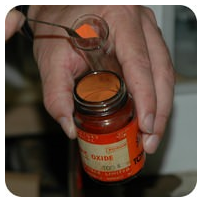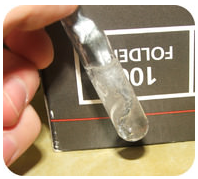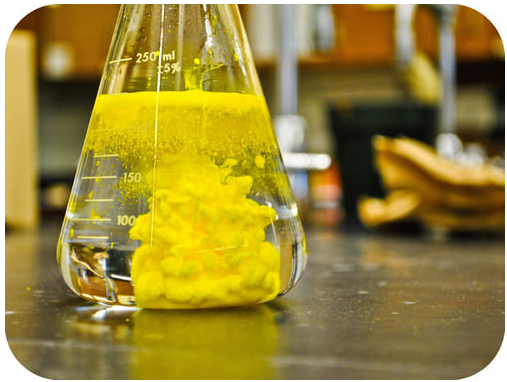2.18: Recognizing Chemical Reactions
- Page ID
- 52547
Have you ever cooked a pizza?
Making a pizza can be as easy as buying a "take and bake" from a store and putting it in the oven, or as complicated as mixing the dough and loading it up with your favorite toppings before baking it. How do you know when it is done? The most obvious sign is that the crust turns light brown. The dough is no longer flexible, but much more rigid. Maybe the cheese has melted. You certainly want the pizza to be cooked, not half-raw.
Recognizing Chemical Reactions
How can a scientist tell if a chemical reaction is taking place? There are four visual clues that indicate that a chemical reaction is likely occurring:
- A change in color occurs during the reaction.
- A gas is produced during the reaction.
- A solid product called a precipitate is produced in the reaction.
- A transfer of energy occurs as a result of the reaction.
Mercury (II) oxide is a red solid. When it is heated to a temperature above \(500^\text{o} \text{C}\), it easily decomposes into mercury and oxygen gas. The red color of the mercury oxide reactant becomes the silver color of mercury. The color change is a sign that the reaction is occurring.


When zinc reacts with hydrochloric acid, the reaction bubbles vigorously as hydrogen gas is produced. The production of a gas is also an indication that a chemical reaction is occurring.

When a colorless solution of lead (II) nitrate is added to a colorless solution of potassium iodide, a yellow solid called a precipitate is instantly produced. A precipitate is a solid product that forms from a reaction and settles out of a liquid solution. The formation of a precipitate is an indication of a chemical reaction.

All chemical changes involve a transfer of energy. When zinc reacts with hydrochloric acid, the test tube becomes very warm as energy is released during the reaction. Some other reactions absorb energy. While energy changes are a potential sign of a chemical reaction, care must be taken to ensure that a chemical reaction is indeed taking place. Physical changes also involve a transfer of energy. The melting of a solid absorbs energy, while the condensation of a gas releases energy. The only way to be certain that a chemical reaction has taken place is to test the composition of the substances after the change has taken place, to see if they are different from the starting substances.
Summary
- There are four visual clues that indicate that a chemical reaction is likely occurring:
- A change of color occurs during the reaction.
- A gas is produced during the reaction.
- A solid product called a precipitate is produced in the reaction.
- A transfer of energy occurs as a result of the reaction.
Review
- What was the color change when mercury (II) oxide was heated?
- What happened when zinc metal was mixed with hydrochloric acid?
- What happens when lead nitrate and potassium iodide are mixed?

